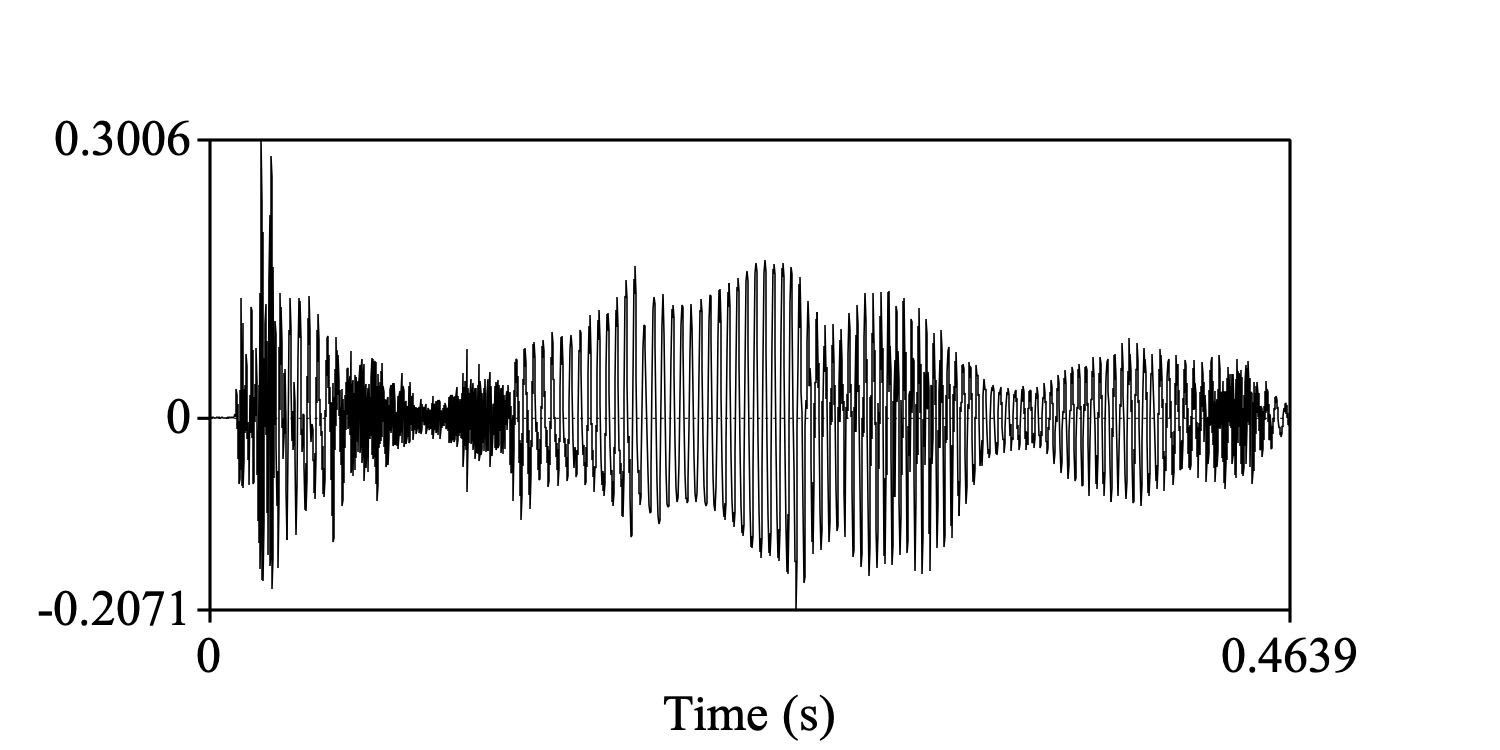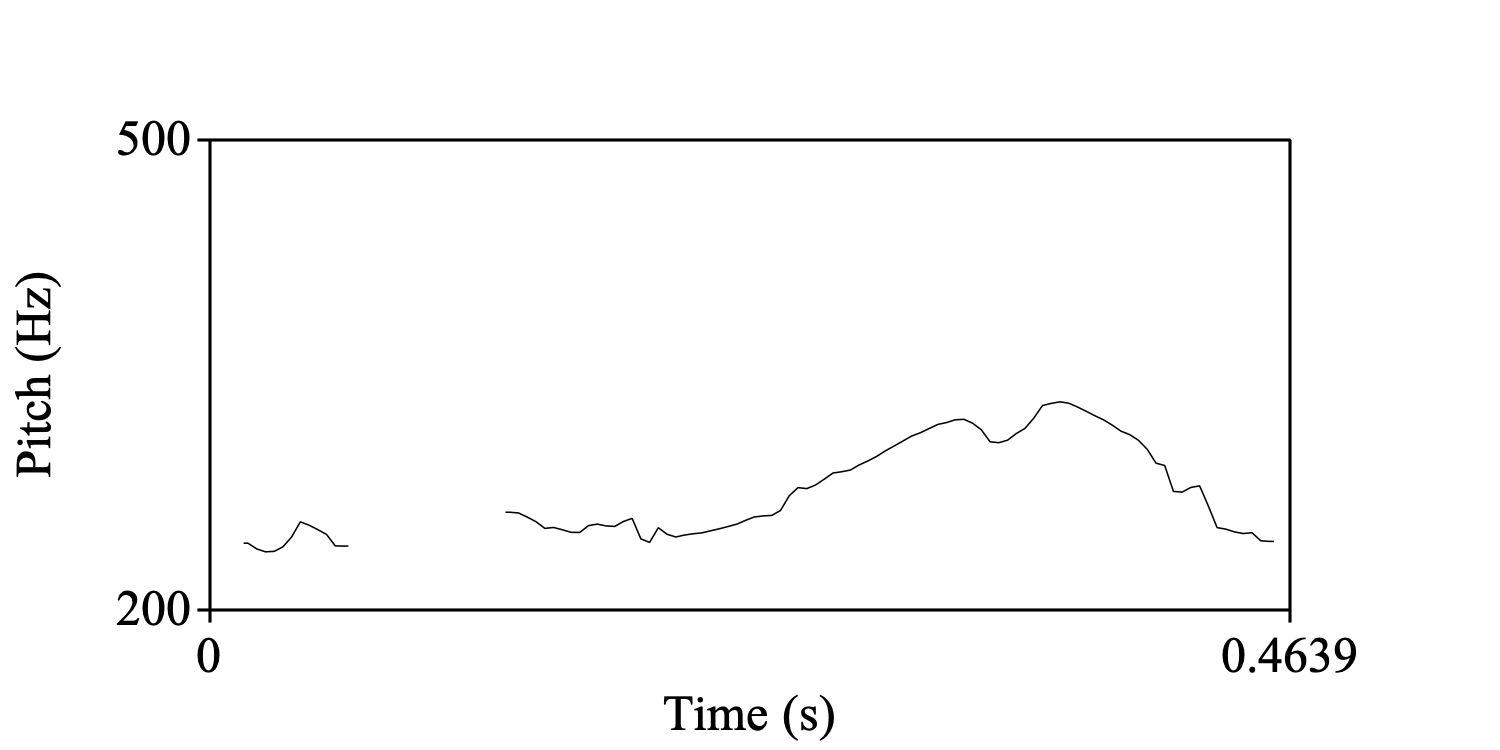
|
This manual page assumes that you have read the Intro.
Many objects in Praat are functions of time. Examples are: Sound, Pitch, Spectrogram, Formant, Intensity, TextGrid, PitchTier, DurationTier, Harmonicity, PointProcess.
In Praat, these functions have a contiguous time domain, i.e. a single time stretch with a start time and an end time. The total duration of such a function is the difference between the start time and the end time. There are up to five ways to see the time domain of an object.
If you select an object that is a function of time and click View & Edit, an editor window will appear on the screen. The rectangle at the bottom will show the start time, the end time, and the total duration.
If you select an object that is a function of time and choose one of the Draw commands, the window that pops up will invite you to supply a time range. If you keep this time range at its standard setting (from 0.0 to 0.0 seconds), Praat will draw the object for the whole time domain and print the start time and the end time below the horizontal axis (if Garnish is on):


If you select an object that is a function of time and click Info, the Info window will tell you the start time, the end time, and the total duration (among other properties of the object).
If you select an object that is a function of time, the following three commands will become available in the Query submenu:
If you choose one of these commands, the Info window will tell you the result, expressed in seconds. These commands are most useful in a Praat script. Example:
selectObject: "Pitch hello"
startTime = Get start time
endTime = Get end time
centreTime = (startTime + endTime) / 2
writeInfoLine: "This Pitch runs from ", startTime, " to ", endTime, " seconds,"
appendInfoLine: "and the centre of its time domain is at ", centreTime, " seconds."
If you select an object that is a function of time and you click Inspect, you can see how the time domain information is stored in the object: the start time is the object's xmin attribute and the end time is its xmax attribute. The total duration is not stored in the object, because it can easily be computed as xmax minus xmin.
© ppgb 20221202